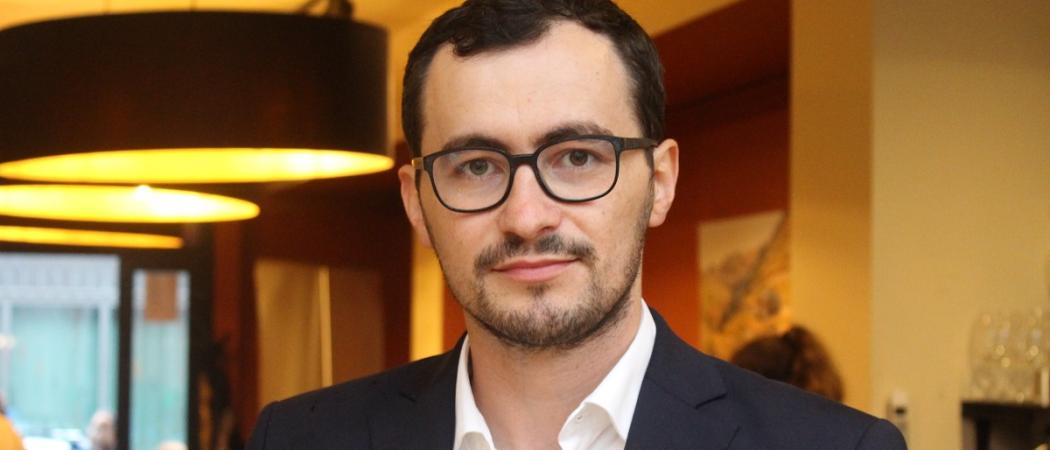Science|Business is launching a brand-new newsletter focusing on the research and innovation divide in Europe

Florin Zubaşcu, Science|Business Executive Editor.
When it comes to science and technology in central and eastern Europe, the conventional wisdom is that it’s long on potential but short on delivery. That is changing fast.
Research and innovation performance is not evenly distributed across the EU, nor should it be. Not all parts of the continent can have the same capacity for innovation, but where potential is visible, the EU and member states should do a better job exploiting it.
Only 5.7% of the 2014 - 2020 Horizon 2020 budget was won by researchers and innovators in the EU-13 member states, a group of countries that joined the EU after 2004 and are mostly located east of the former Iron Curtain. It’s no surprise then that the European Commission’s innovation scoreboards consistently find these countries at a disadvantage compared to richer countries in the west
The research and innovation potential in the EU-13 is huge, with multinationals investing there, long academic traditions ready to foster young scientists, and a promising crop of tech start-ups, spin-offs and projects springing up from Tallinn to Sofia.
Yet, researchers in these countries continue to have a very hard time competing against counterparts in western Europe for cash distributed via EU’s most prestigious research and innovation programmes.
There are many reasons this happens. Across the EU, only a few member states spend more than the target of 3% of their GDP on R&D, while others – predominantly in central and eastern Europe – are still struggling to get their R&D expenditure above 1%.
Most EU-13 countries are still slow to implement more competitive funding and evaluation, even though some have made moves to reform their R&D systems, ridding them of old habits from their communist past.
The European Commission hopes that the revamp of European Research Area (ERA), with its sweeping plan to create a single market for research, will help boost public and private R&D investment across the EU and nudge member states to modernise their R&D systems.
It’s obvious that member states have to do their fair share of work. But can the EU also do more?
Policymakers in Brussels agreed to triple the budget for the Widening programme in Horizon Europe to €3.3 billion, to help researchers in poorer member states build the networks they need to become part and parcel of EU’s research establishment. However, the consensus remains that Horizon Europe should stick firmly to the excellence principle and fund the best proposals without reference to where researchers are based.
At the same time, EU policymakers want Europe to assert its science and technology prowess on the global stage and prove it can compete with China in cutting edge technologies. That begs the question: can it do so while wasting so much potential, with half the continent trailing the other half in research and innovation?
We will try to explore this conundrum in a brand-new newsletter that we are launching today. Hand-in-hand with a series of live events, the newsletter will track R&D growth in central and eastern Europe and the people, policies and programmes that drive it l. The region is by no means an innovation desert, and we will also look at the hot labs and companies in these countries, leading innovators, R&D centres and the public and private funders of research.
The newsletter targets R&D leadership – public and private – in central and eastern Europe, as well as those in Brussels and other western capitals eager to bridge the gap between east and west. It also fills an important hole in the English-language media landscape.
The first edition comes with an op-ed from EU research and innovation commissioner Mariya Gabriel on the Widening programme and broader efforts to establish ERA, along with a feature story on the reasons why four central European countries trail behind in the European Research Council’s grant competitions; and an in-depth look at the threat to academic freedom in Hungary and Poland.
Future editions will look at why eastern Europe’s largest research infrastructure, the €850 million Extreme Light Infrastructure based at three facilities in the Czech Republic, Hungary and Romania remains incomplete four years after it was due to be fully up and running. We will also scan the region for pockets of research and innovation excellence from Bucharest to Prague.
For me as editor and a Romanian citizen, this is personal. Since joining Science|Business in 2014, I have spent a lot of time tracking the problem of the divide, the brain drain it generates and various attempts by national governments and the EU to deal with it.
We welcome opinion pieces and other contributions from thought leaders in Brussels and EU capitals. Send yours to [email protected].
Here you can find the first edition of the newsletter. Sign up here to make sure the second edition lands in your inbox.
Click here for more information about the Widening.





 A unique international forum for public research organisations and companies to connect their external engagement with strategic interests around their R&D system.
A unique international forum for public research organisations and companies to connect their external engagement with strategic interests around their R&D system.